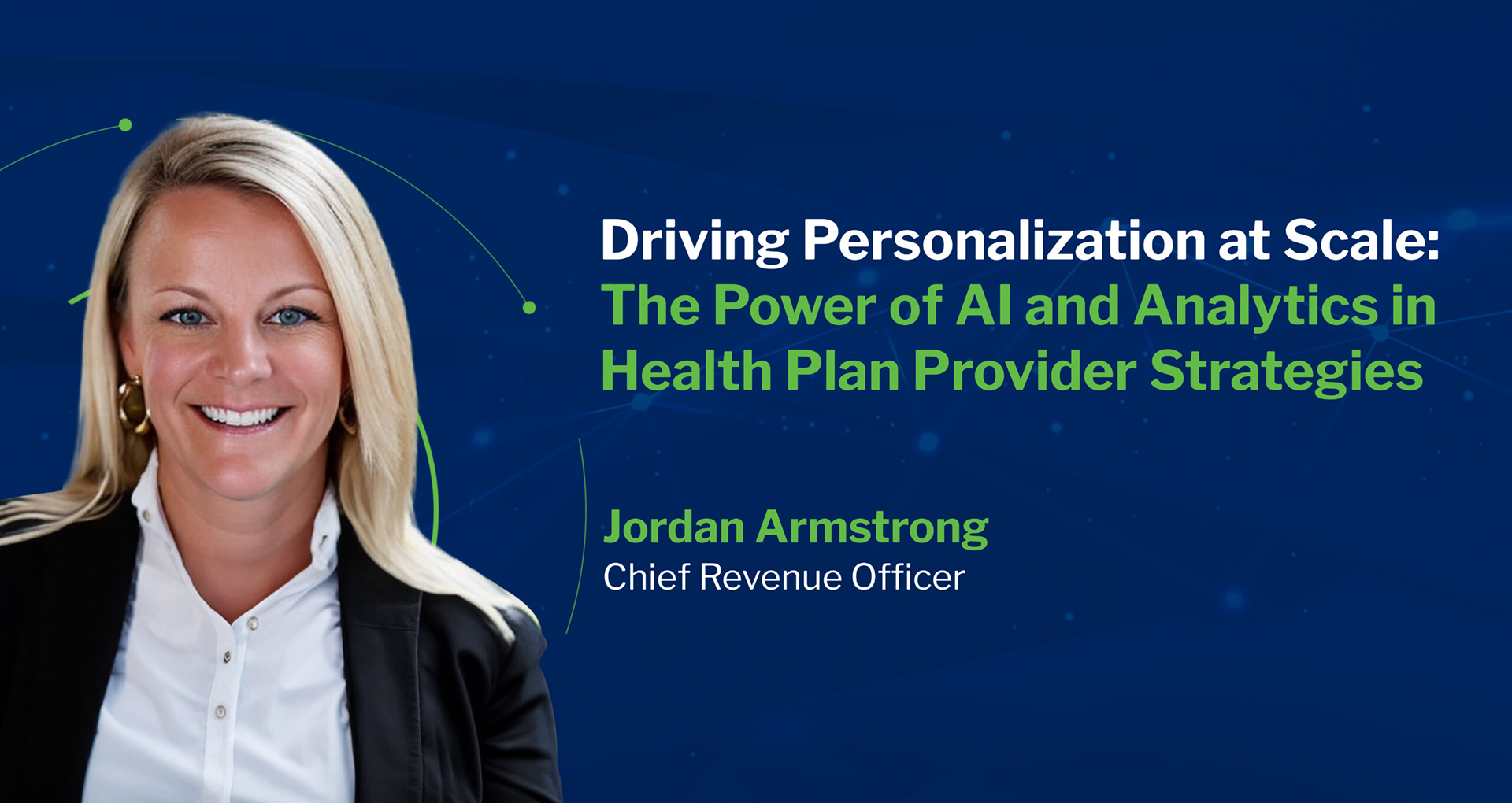Listen to Podcast
Introduction: Welcome to Healthcare De Jure, where we dish up and digest the latest in healthcare. For the next 30 minutes, sit back as we bring you insights, commentaries, and discussions on trending topics to the table, all expertly served up by our host and his guests. Now, here’s your host, Matt Fisher.
Matt Fisher: Welcome back and thank you for joining as we dive into the hottest topics in healthcare. I’m your host, Matt Fisher. On the menu today is Jordan Armstrong, Chief Revenue Officer at ResultsCX. Jordan, welcome to the show.
Jordan Armstrong: Thanks so much, Matt. Great to be here.
Matt Fisher: So, Jordan, what I always like to do before getting into the main part of the conversation is give my guests a chance to provide more of an introduction in terms of who they are and what they do. So, Jordan, the floor is yours.
Jordan Armstrong: Yes, Matt, thank you so much. As you indicated, I am at Results CX today. Over 50% of the practice that we have relates to consumer engagement and it is laser-focused on supporting our healthcare customers. Majority of our clients are healthcare insurance organizations, but we also work with some health service entities and providers on the health system side of the house.
About myself, my career spans different areas of healthcare, starting with population health management. Focusing on how to ensure care was going out to the member, that the provider had the correct tools to make smart and educated healthcare decisions, and move away from the one-to-one approach, and how we could support them in a one-to-many approach.
At ResultsCX, we try to leverage a lot of the phenomenal technology, not only data and analytics, but some of the new AI tools to provide a more robust experience to the healthcare consumer.
Matt Fisher: So, before digging into and picking some of those concepts about how we can leverage that phenomenal technology, I want to ask you a question, what got you into healthcare in the first place?
Jordan Armstrong: Well, gosh, that goes way back to when I was young and in college. I always had a strong interest in sciences and math. And I started in the back room of healthcare, doing bench research at Cincinnati’s Children’s Hospital. From there I built on my capabilities and strengths and spent time in front of healthcare consumers and the provider network, pulling together strategies around how we could improve overall healthcare experiences from multiple different lenses and along the way had great opportunities to build my career.
Matt Fisher: So, now picking that up, when you’re talking about consumer experience and consumer engagement, what does that mean from your perspective?
Jordan Armstrong: Great question. We spend a lot of time talking to our customers about this. Making sure that they’re taking a deliberate and focused approach to how they engage with their members or patients, where the outreach or interaction is coming from, being intentional, and mapping the overarching journey. We also identify the unique and specific needs of the member at different phases and touch points of their journey and then determine the appropriate touch.
There’s always a time and a place for that in-person interaction. When do we need to serve up digital tools and digital information for them to interact with so that members can self-service?
We then look at the back office. The financial experience from healthcare can be rather abrasive. The healthcare system in the U.S. has become overly complex, I think a lot of individuals would agree, and we haven’t made it easy for healthcare consumers to understand the cost implications of care, especially when they are in some of the more scary times of their life, either supporting a family member or for their own care. And so how can we reduce the potential points of abrasion throughout that journey? by being laser focused and deliberate about how we touch the patients and members during their time of need.
Matt Fisher: As you’re talking about time of need and, the complexity of insurance is certainly real and present because most people have had that experience where you get some type of communication and just kind of throw your hands up in the air. So, what are some of the approaches that you’ve seen that have successfully helped clear that fog and make it easier for the recipient of that information to have that positive aha moment?
Jordan Armstrong: That’s a great question. There are a lot of different tools out there, and even just changing how we engage with the consumer, that shift from basic care to more holistic care.
In a Medicare Advantage world, for example, the financial models encourage providers to provide that holistic care based on the known risk and the diagnosed diseases of an individual, and make sure that they’re rewarded for providing more that holistic member experience versus the clicks for care of the historical way. Healthcare was assessed in the United States, and it was noticed that any communication that goes out to the patient or member wasn’t in plain language. Making it easy for members to understand information, giving them multiple different tools to help them understand for instance, their benefits. We’ve been helping our clients use a lot of AI-based video technology to help them communicate what we call ANOC- the Annual Notice of Change of Benefits – and AI gives them the agility they need to create multiple videos at scale and meet their consumers where they’re at. So, for members that don’t necessarily understand written communication, changing the type of media can help.
Matt Fisher: So how have you seen AI tools progress? And where are the benefits being seen? And then also not to make it an overly complicated question, what drawbacks have you seen arise? Or what kind of caution do you have around the use of AI?
Jordan Armstrong: Yeah, great question, and that is the million-dollar question, but I think it’s a billion-dollar question. Healthcare is slow to adopt AI technology. How we service our clients, and their members depends on how we can make technology more efficient at the back end.
When our advocates and our associates interact with members and patients, they can provide concise and easy to understand information. We offer our advocates tools that guide their next best action, depending on what is transpiring throughout that voice or chat conversation, using AI to help identify what would be the next probing question, or what would be the next set of information that should be communicated to that consumer. There aren’t a lot of use cases out there right now. There is fear of the unknown, and machines will sometimes hallucinate. Any potential negative impact on access to care is going to be negatively received by the market. And so, I have cautious optimism around how we use AI tools at the right inflections to really enhance that experience.
What I always talk to my teams about, and even our clients about is that it’s never going to be an AI only approach or an AI only interaction with the healthcare consumer. It’s always going to be a human plus machine, and how that combination can enhance the patient or member experience.
Matt Fisher: Yeah. If I’m interpreting what you said correctly, it really sounds like AI tools are being utilized to complement and extend what an advocate is able to do, prompting on what is being heard. These are possible next best actions or supplemental information for that interaction. The advocate reviewing that information looks at it and goes, not the right time, but at least they have received a nudge.
Jordan Armstrong: Exactly. Right. We are laser focused on enhancing that overall experience. So, when we’re representing our clients in the marketplace, we touch their consumers more than they do on any given day, month, and year. Making sure that when members are interacting with our teams, we’re an extension of the brand, and the culture of our client is very important to us. A machine would only be able to create a standardized experience.
Matt Fisher: Right, and this goes back to one of your original points of you trying to change the one-to-one to a one-to-many approach and drive personalization, that doesn’t feel like it’s just a cookie cutter approach.
Jordan Armstrong: Exactly. Personalization is king. And while we’re seeing massive advancement in how health systems and payers use data today, and derive insights from that data, I would say there’s still a lot left to be desired. How can we further personalize that experience and anticipate what the needs of the healthcare consumers are based on the plethora of data that’s being gathered, on any given day on any given interaction. Where are clients struggling? All that data can still help them get insights. But the key question is, what do we do about it? What’s the action we take based on those insights? What’s just noise, and what is actionable? So really helping our clients sort through the noise and get to what their strategic priorities are. Or what their challenges and market headwinds, tailwinds, may be, and mapping specifically to what actions they should take based on the desired outcome, is where we come in.
Matt Fisher: Yeah, and that’s a great point. Because any business that is trying to be successful is trying to figure out how to achieve their goals. And as you said, that means being able to ingest appropriate data and gather meaning from it, as opposed to just trying a scattershot approach, where you hope something sticks. Thinking about all these different pieces, I know you said you focus on assisting insurance companies, and you mentioned Medicare Advantage, which is obviously a program that is growing in popularity. Why is the consumer engagement so important to an MA plan?
Jordan Armstrong: Yeah, that’s right. CMS has placed additional regulatory pressure on how health plans service their populations and members. And the historical approaches of yesterday are not going to work today. CMS is right to increase scrutiny, and plans are looking broader and wider around how they can do more, how they can better engage. And this is one of the things that we’re seeing, based on the disease burden that the member has, this is the projected care that they’re going to need. CMS is incentivizing the provider and health system to provide adequate care based on the holistic risk of that potential member and so I would really say organizations are going to have to continue to get more creative around what their engagement strategy should look like, and where the opportunities are to enhance digital engagement.
My parents are very tech savvy and well into their 70s, we need to give them multiple different platforms for engagement, by leveraging mobile apps, SMS reminders, personalized emails. The bulk emails that go to everyone, go immediately into the trash bucket. We need to leverage a multi-channel strategy like behavioural nudges and gamification. When we talk about behavioral nudges, they can just be really small rewards for completing various health actions, such as, did you take your health risk assessment, or how many times this month did you go to the gym? If you go to the gym 15 times this month, you get a gym reimbursement credit. These small things are seeing a great uptick and offer an opportunity for continuous engagement with the member throughout the plan year. Then also bringing in gamification via the wearable devices. I don’t have statistics, but I wish I did, like how many of us wear smart watches, and this extends way beyond smart watches, my parents wear the Oura ring. A lot of people have the glucose monitoring devices not because they’ve got diabetes but more from a preventative proactive approach to overall wellness.
We are starting to see a lot of success from a community partnership standpoint, partnering with local organizations to offer community-based wellness programs to help them engage within their community and really resonate and connect to the day-to-day life of their populations
Matt Fisher: You are raising a lot of interconnected points, but it all comes back to how to get that person to respond and engage with that communication that’s going out.
For those of you just joining I’m with Jordan Armstrong from ResultCX. We are talking about consumer engagement and specific strategies in the Medicare Advantage market.
Jordan you’re talking about gamification and the use of technology or devices among a targeted population. It seems like there is a growing shift because more people are using technology and for longer periods of time that it seems like it’s getting to the point where you can’t make that blanket statement of “oh people of an older age are going to be tech averse or technologically challenged”. You really have to assume that everyone has a baseline literacy and ability to utilize technology.
Jordan Armstrong: Yeah, understanding the digital literacy of each member and how that equates into healthcare literacy. I would say Medicare Advantage has had a meaningful impact on overall healthcare literacy across the United States. The advertising that goes out every single year is pushing for a more educated consumer. The questions that we get from a lot of the inbound calls, as we’ve got licensed agents supporting the sales side of health plans, is that it’s definitely a much more educated consumer. They ask detailed questions not only about cost, because cost will remain king in this market, but detailed questions around benefits and supplemental benefits. We are laser focus on net new benefits. There are plans on the market that focus on chronic condition or specific chronic condition care and so it’s definitely a much more educated interaction with healthcare consumers today than even five years ago.
Matt Fisher: To that point of understanding the rising level of both digital and health literacy, is that making it more challenging for the plans to fight for their market share or is it just making it more challenging to generally operate in the market?
Jordan Armstrong: Yeah, this year is going to be dynamic. We’ve got a lot of factors at play. We have an election, general plans have an overall reduction of two percent, and so there’s a membership out there that is going to have to find net new plans. We’re also seeing a number of the major carriers and even some of the smaller carriers going to have to focus on specialized D-step, C-step plans for the first time. Right now, the projections are pointing to continued growth in Medicare Advantage probably not as exponential as we’ve seen in other years but over half of the Medicare eligible population today is on a Medicare Advantage plan and we expect to see as much as six percent growth. On a much more conservative side we may only see a one percent uptick in overall Medicare Advantage and so it is really important to have a diversity of plan offerings, a differentiated strategy. And there are financial pressures not only on providers but on plans as well. How can they offer plans that are also profitable and stay relevant year over year. There’s a lot of industry hype right now around the regulatory pressures. It is no secret that the Medicare Stars Ratings that came in recently were the lowest we’ve seen in a long time. There’s legislation out there, lawsuits by payers, because their Star Ratings are core to their overall revenue. Even slight changes there have significant impact on their overall revenue and subsequently how they service their members. So, member care, member engagement is at the center of everything that the plans are thinking about today.
Matt Fisher: Yeah, and that point about the Star Ratings, when they’re released everyone pays attention and from the plan side it has a pretty significant impact on their business. How does that factor into their communications to the members though, do the members pay attention to the Star Ratings, and does that influence what they’re doing or how does that factor into that engagement piece?
Jordan Armstrong: The Star Ratings are largely based on how plans support their members, how they communicate with their members, how they service their members. I would say Star Ratings have caused a heightened focus on investing more on the overall member experience so that when the member is interacting with the plan, they’re getting accurate and concise information and they’re also walking away with a with good experience. They’re getting timely responses to their questions, and we’re going to see more engagement around care gaps. A plan’s ability to adjust and close the care gaps of their members is becoming crucial and we see creative strategies around how plans engage their members. They identify where they’ve got open risk and encourage members to get the right preventative screening or the right proactive care, or care for their chronic conditions. Now we have an environment that’s encouraging care versus care avoidance which we saw a lot of around COVID.
Matt Fisher: I think that feeds back to being able to get appropriate data on all the members so that it informs ongoing engagement as well as how they’re structuring the benefits and the opportunities for care being offered. So, are you seeing an evolution in how plans are reaching out to their members to gather new information or asking old questions in different ways, to see if it generates different types of responses?
Jordan Armstrong: I would definitely say we’re seeing a lot of innovation around how plans are interacting with their members. The innovation relates specifically to how they think about population health, care management, how they use data, and predictive analytics to anticipate care needs, so that they can proactively engage with their members whether it’s via telehealth or remote patient monitoring, or all the way to personalized medicine. Those are some of the innovations that you’re seeing from an insurance carrier side. When we talk about care it’s not necessarily only the medical side, how are plans thinking about addressing the social determinants of health. And looking for partnerships within the communities of the populations they serve and making sure that they’re integrating SDOH interventions and opportunities to offer holistic health solution, so that members get a higher level of care that proactivity decreases health care risk and that has a positive impact on their Star Ratings.
Matt Fisher: Yeah, it kind of brings that full circle to holistic care and the holistic approach, because you’re having to utilize all available tools and resources and determine how best to bring that all together. Jordan, believe it or not we’re almost at the end of our time so I want to use this time to frame one final question to you which is, what’s your bold prediction for what will shake up either Medicare Advantage or that broader consumer member experience in the coming year?
Jordan Armstrong: I think 2025 and even into 2026 there’s going to be a major shake-up. What you’re going to see is intentional focus on hyper-personalization of member engagement and how we care for members. I think one of the other interesting ideas that’s out in the market is the shift towards a dynamic benefit structure versus where we are today – this is your plan, it’s static, and your benefits remain the same through the year. We’re going to continue to see expansion into the virtual world and the home-based care models. Bringing care into the comfort of where that patient wants to interact with the health system and their health insurance company. So, I don’t think anything groundbreaking, but this year will definitely continue to be dynamic not just for open enrollment, but also as Medicare Advantage plans look to engage with their members in different ways than they have historically, to have greater impact.
Matt Fisher: Yeah, so even if those aren’t necessarily breaking new territories, still a lot of potential shake-ups and a lot to keep an eye on. So, thank you for the predictions and as I said, believe it or not, we are already out of time. I want to thank my guest, Jordan Armstrong, for a great, conversation today. Well, thank you so much. It’s been a sheer pleasure. And thank you to everyone listening. Keep the dialogue going and connect with me at hashtag H-C-D-E-J-U-R-E. I’m Matt Fisher. Until next time.
This podcast was first published on Healthcare De Jure.

Jordan Armstrong, Chief Revenue Officer at ResultsCX, taps into decades of healthcare experience as she discusses how member expectations are evolving within a shifting regulatory landscape. Generative and agentic AI presents a tremendous opportunity for payors to connect with members through various channels—websites, IVR, mobile apps, and social media—while tailoring communications to match members’ digital literacy levels.






